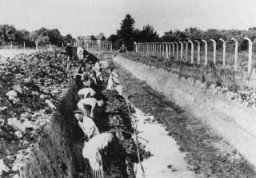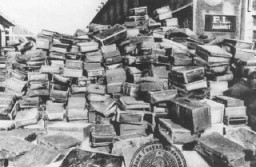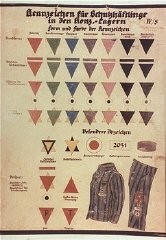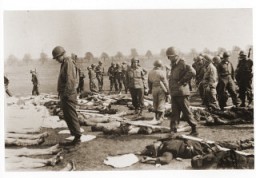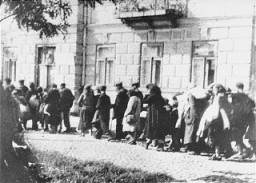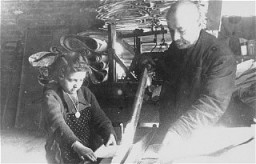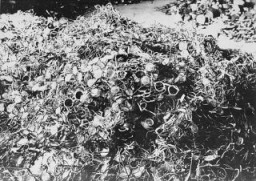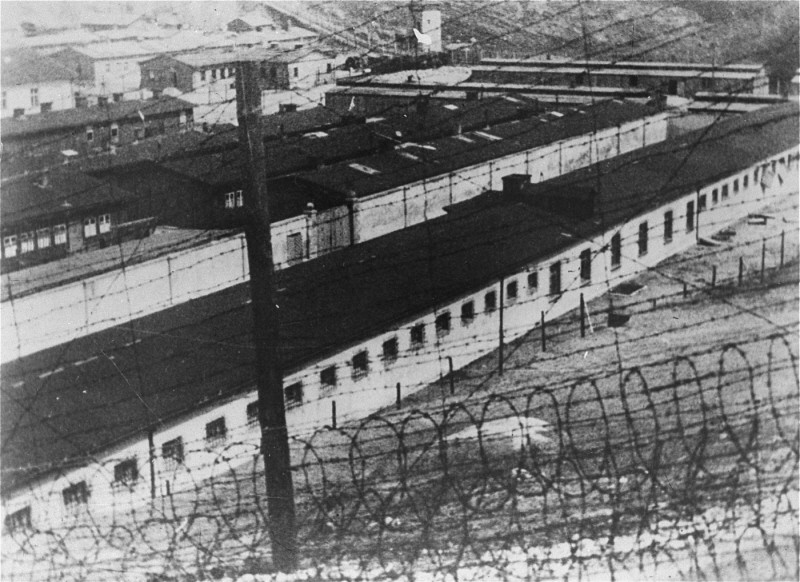
Nazi Camps
Between 1933 and 1945, Nazi Germany and its allies established more than 44,000 camps and other incarceration sites (including ghettos). The perpetrators used these sites for a range of purposes, including forced labor, detention of people thought to be enemies of the state, and for mass murder.
-
1
In March 1933, the first concentration camp, Dachau, opened outside of Munich, Germany. It was used primarily for political prisoners and was the longest running camp in operation, until its liberation in April 1945.
-
2
Nazi officials established more than 44,000 incarceration sites during the time of the Third Reich. This estimate is based on continuing research of contemporary sources, including the perpetrators’ own records.
-
3
Not all facilities established were concentration camps, though they are often referred to in this way. These sites varied in purpose and in the types of prisoners detained there.
Early Camps (1933–38)
From its rise to power in 1933, the Nazi regime built a series of incarceration sites to imprison and eliminate real and perceived "enemies of the state." Most prisoners in the early concentration camps were political prisoners—German Communists, Socialists, Social Democrats—as well as Roma (Gypsies), Jehovah's Witnesses, gay men and men accused of homosexuality, and persons accused of "asocial" or socially deviant behavior. Many of these sites were called concentration camps. The term concentration camp refers to a camp in which people are detained or confined, usually under harsh conditions and without regard to legal norms of arrest and imprisonment that are acceptable in a constitutional democracy.
After Germany's annexation [Anschluss] of Austria in March 1938, Austrian political prisoners came into the Nazi concentration camp system. Following the violent Kristallnacht ("Night of Broken Glass") pogroms in November 1938, Nazi officials conducted mass arrests of adult male Jews throughout the country, the first time Jews were arrested en masse precisely because they were Jews. Over 30,000 German Jews were incarcerated in the Dachau, Buchenwald, and Sachsenhausen concentration camps in Germany, initially until each could provide proof of their ability to emigrate.
Types of Camps
Many people refer to all of the Nazi incarceration sites during the Holocaust as concentration camps. The term concentration camp is used very loosely to describe places of incarceration and murder under the Nazi regime, however, not all sites established by the Nazis were concentration camps. Nazi-established sites include:
- Concentration camps: For the detention of civilians seen as real or perceived “enemies of the Reich.”
- Forced-labor camps: In forced-labor camps, the Nazi regime brutally exploited the labor of prisoners for economic gain and to meet labor shortages. Prisoners lacked proper equipment, clothing, nourishment, or rest.
- Transit camps: Transit camps functioned as temporary holding facilities for Jews awaiting deportation. These camps were usually the last stop before deportations to a killing center.
- Prisoner-of-war camps: For Allied prisoners of war, including Poles and Soviet soldiers.
- Killing centers: Established primarily or exclusively for the assembly-line style murder of large numbers of people immediately upon arrival to the site. There were 5 killing centers for the murder primarily of Jews. The term is also used to describe “euthanasia” sites for the murder of disabled patients.
Other types of incarceration sites numbered in the tens of thousands. These included but were not limited to early camps; “euthanasia” facilities for the murder of disabled patients; Gestapo, SS and German justice detention centers; so-called “Gypsy” camps, and Germanization facilities.
Concentration Camps
Concentration camps are often inaccurately compared to a prison in modern society. But concentration camps, unlike prisons, were independent of any judicial review. Nazi concentration camps served three main purposes:
- To incarcerate real and perceived “enemies of the state." These persons were incarcerated for indefinite amounts of time.
- To eliminate individuals and small, targeted groups of individuals by murder, away from the public and judicial review.
- To exploit forced labor of the prisoner population. This purpose grew out of a labor shortage.
The First Concentration Camp
The major purpose of the earliest concentration camps during the 1930s was to incarcerate and intimidate the leaders of political, social, and cultural movements that the Nazis perceived to be a threat to the survival of the regime. The first Nazi concentration camp was Dachau, established in March 1933, near Munich.
In many of the concentration camps, the Nazi SS either installed or had plans to install gas chambers to assist in their daily business of killing prisoners who were too weak or sick to work. Before the widespread use of gassing in the concentration camps, weak, ill and exhausted prisoners selected by camp physicians were murdered at “euthanasia” (T4) facilities from 1941-1943 in a secret program called 14f13. Gas chambers were also to kill small targeted groups of individuals whom the Nazis wanted to eliminate (Polish resistance fighters, Soviet POWs, etc.). This was the purpose of the installation of gas chambers, for example, at Mauthausen, Sachsenhausen, Stutthof, Auschwitz I, Ravensbrück, Lublin/Majdanek, etc.
Camp Structure
All concentration camps were structured in the same way. Each had an internal camp staff that consisted of five sections:
- Commandant's Headquarters (consisting of the commandant and his staff)
- A protective detention office run by a Security Police officer who maintained prisoner records in terms of arrival, discharge, discipline and death and who received his instructions from the Reich Central Office for Security
- Commander of the Protective Detention Camp
- Administration and Supply
- SS Physician
Forced-Labor and Prisoner-of-War Camps
Following the German invasion of Poland in September 1939, the Nazis opened forced-labor camps where thousands of prisoners died from exhaustion, starvation, and exposure. SS units guarded the camps. During World War II, the Nazi camp system expanded rapidly. In some camps, Nazi doctors performed medical experiments on prisoners.
Following the June 1941 German invasion of the Soviet Union, the Nazis increased the number of prisoner-of-war (POW) camps and subcamps. Some new camps were built at existing concentration camp complexes (such as Auschwitz) in occupied Poland. The camp at Lublin, later known as Majdanek, was established in the autumn of 1941 as a POW camp and became a concentration camp in 1943. Thousands of Soviet POWs were shot or gassed there.
Transit Camps
Jews in Nazi-occupied lands often were first deported to transit camps such as Westerbork in the Netherlands, or Drancy in France, en route to the killing centers in German-occupied Poland. The transit camps were usually the last stop before deportation to a killing center.
Killing Centers
Killing centers first made their appearance in Nazi Germany in the execution of Operation T4, the so-called “euthanasia” program. It was the Nazi state’s first program of mass murder, where disabled patients in German facilities were murdered in gas chambers using carbon monoxide gas.
To help carry out the "Final Solution" (the genocide or mass destruction of Jews), the Nazis established killing centers in German-occupied Poland, the country with the largest Jewish population. Killing centers were designed for efficient mass murder. The first one, which opened in December 1941, was Chelmno, where Jews and Roma were gassed in mobile gas vans. In 1942, the Nazis opened the Belzec, Sobibor, and Treblinka killing centers to systematically murder the Jews of the General Government (the territory in the interior of German-occupied Poland). Here Nazi planners borrowed the gassing technique from the “euthanasia” program to murder Jews in gas chambers using carbon monoxide gas generated by engine exhaust.
At the Auschwitz camp complex, gassing took place using the pesticide Zyklon B (hydrogen cyanide, or prussic acid). During the height of deportations to the camp in 1943-44, an average of 6,000 Jews were gassed there each day. Over 2,772,000 Jews (or 46% of Jewish victims) were murdered at killing centers.
Millions of people were imprisoned, mistreated, and murdered in the various types of Nazi camps. Under SS management, the Germans and their collaborators murdered 2.7 million Jews in the killing centers alone. Only a small fraction of those imprisoned in Nazi camps survived.
Series: Concentration Camps
Series: The Holocaust
Switch Series
Critical Thinking Questions
- How did the functions of the camp system expand once World War II started?
- How could the development of a system of concentration camps be a precursor to mass atrocity and genocide?
Further Reading
Gutman, Yisrael and Michael Berenbaum, eds. Anatomy of the Auschwitz Death Camp. Bloomington: Indiana University Press, 1994.
Wachsmann, Nikolaus. KL: A History of the Nazi Concentration Camps. Farrar, Straus and Giroux, 2015.
The United States Holocaust Memorial Museum Encyclopedia of Camps and Ghettos, 1933-1945. Vol I, Early Camps, Youth Camps, and Concentration Camps and Subcamps under the SS-Business Administration Main Office (WVHA), ed. Geoffrey Megargee. Bloomington: Indiana University Press in association with the United States Holocaust Memorial Museum, 2009.


